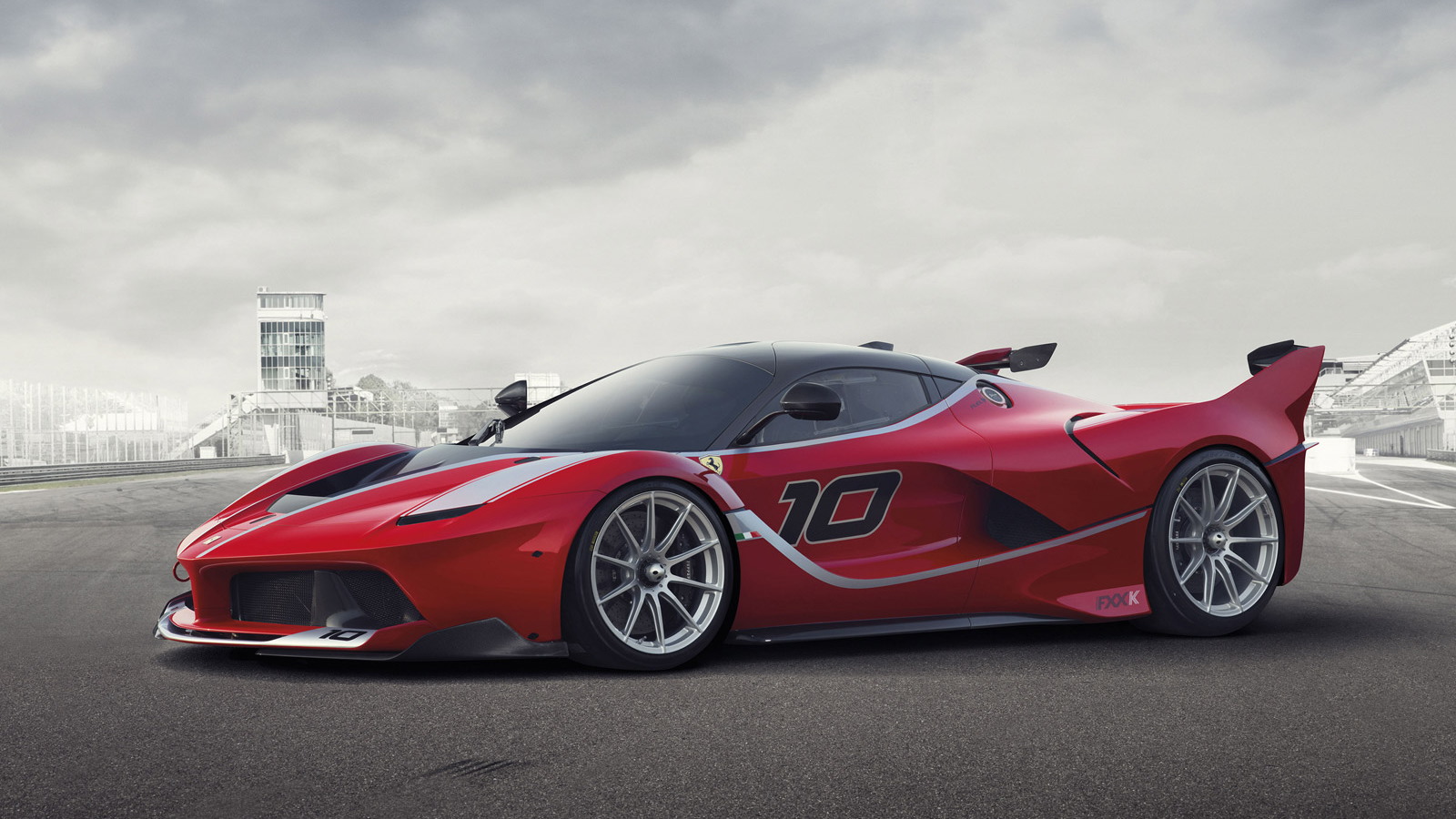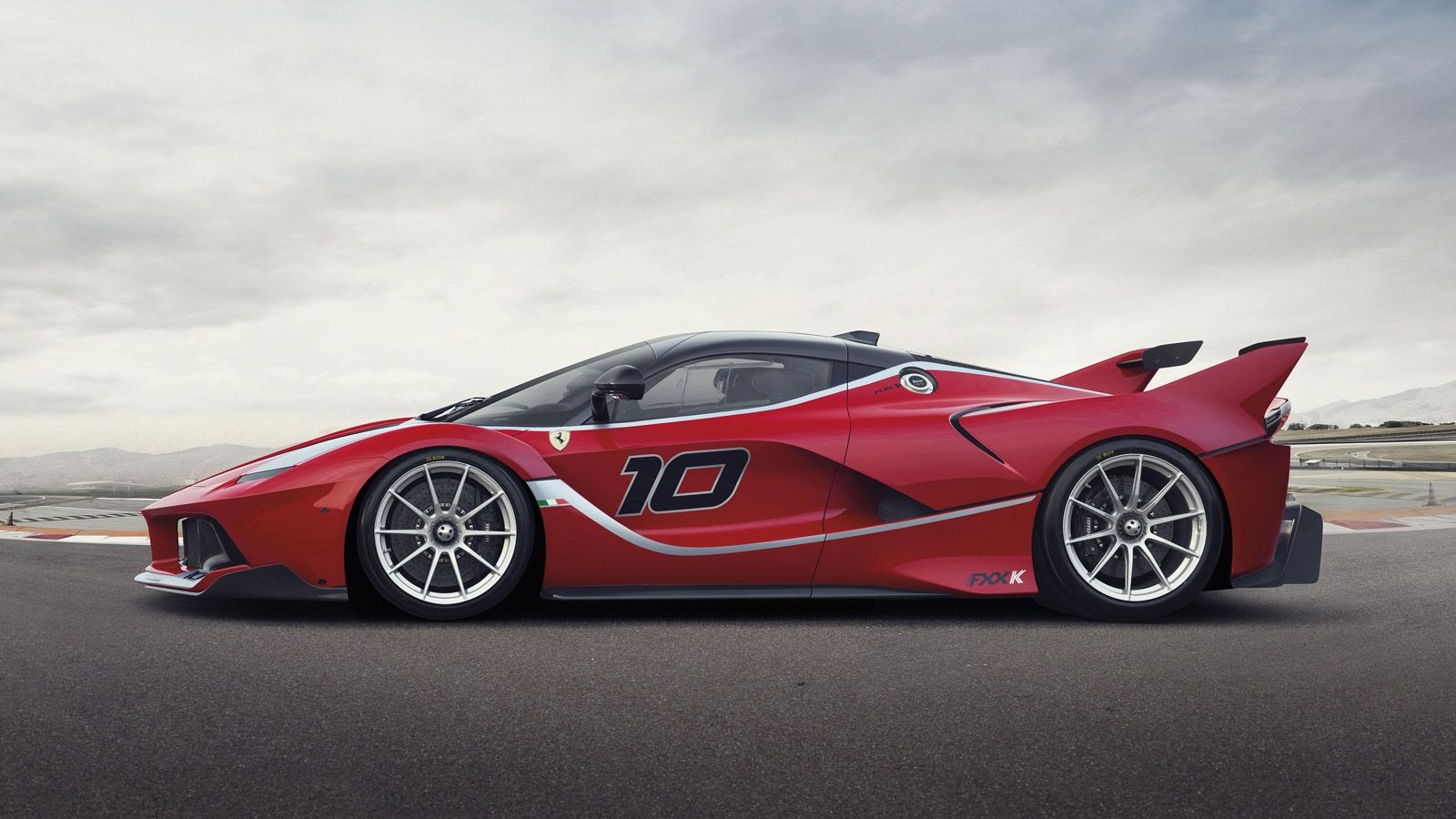Ferrari’s new track-only version of its LaFerrari flagship is the FXX K, where the K refers to the special kinetic energy recovery system (KERS) fitted to the car. The FXX K has been revealed today ahead of its official debut at the Finali Mondiali event taking place at Abu Dhabi’s Yas Marina circuit later this week. The event is Ferrari’s annual celebration of the end of the motorsport season and brings together all of its separate sporting divisions, including the XX program.
Like Ferrari’s previous XX cars, also known as experimental cars, the FXX K will form part of Ferrari’s Corse Clienti customer racing program and be offered exclusively to the brand’s most loyal customers, although it’s not unusual to find XX cars for sale on the used car market. As the cars are all designed for track-use only, it means they can’t be registered for the road.
DON'T MISS: 27-Year-Old That Crashed McLaren P1 Had Car For Less Than 24 Hours
However, the XX cars aren’t designed for racing either, meaning they're unfettered by pesky homologation and racing regulations. They are developed to be completely uncompromising, incorporating many technological innovations that will appear in the next generation of Ferrari road and race cars. The FXX K will start hitting race tracks around the world from next year onwards as part of a two-year program.
The powertrain used is similar to the one found in the LaFerrari, in that it features a naturally-aspirated 6.3-liter V-12 paired with a seven-speed dual-clutch transmission and electric drive system. The engine alone is rated at 838 horsepower and 553 pound-feet of torque, and with the electric drive system peak output rises to 1,035 hp and torque is said to be more than 663 lb-ft. By comparison, the stock LaFerrari is rated at 950 hp and more than 660 lb-ft of torque, and McLaren’s rival to the FXX K, the P1 GTR, comes with 986 hp.
The big V-12 features new camshafts and a modified valve train with mechanical rather than hydraulic tappets. The intake manifolds have been redesigned and given a special type of polishing treatment, and the exhaust system has been modified as its silencers have been eliminated (click here to hear what that sounds like).
The electric drive system is the same two-motor HY-KERS setup in the stock LaFerrari but it has been tuned for pure performance. The first motor provides drive to the vehicle, thus aiding the V-12, and it also recovers kinetic energy during braking, storing it in the car’s lithium-ion batteries. The second motor is driven by the V-12 and is used to keep the charge level of the batteries constant. In addition to this, the second motor also can directly power electronic ancillary systems such as the lights.
In the FXX K, the HY-KERS system provides the driver with four new settings: Qualify, for maximum performance within a limited number of laps; Long Run to optimize performance consistency; Manual Boost for instant maximum torque delivery; and Fast Charge, for a fast recharge of the car’s battery.
As for the changes to the body, these are aimed at improving efficiency at every stage of every track by relying on both active and passive components. The front of the car is dominated by a twin-profile spoiler and a larger splitter, which is 30 millimeters lower than on the LaFerrari, with a gap in its center. This design is an application of the concepts developed to improve aero balance in GT racing in the World Endurance Championship where Ferrari competes with a 458-based car. There are also new fins and a dive plane that helps channel air around the body.
At the rear, the tail section is now higher and the spoiler able to extend further for a total increase in extension of 60 mm when fully deployed. A vertical fin and a small wing each side of the tail act as guide vanes in a low drag configuration and boost the spoiler’s efficiency in a high downforce setting. This system also creates considerable downforce at the rear of the car. This works together with the section of the flat underbody just ahead of the rear wheels, which also generates downforce.
The end result is an incredible 50 percent improvement in downforce in the low drag configuration and a 30 percent improvement in the more aggressive downforce configuration, resulting in a figure of 1,190 lbs of downforce at 124 mph.
For the chassis, the LaFerrari’s standard double wishbones at the front and multi-link setup at the rear were maintained. However, special Pirelli slick tires (19-inch front and 20-inch rear) complete with sensors that monitor longitudinal, lateral and radial acceleration, as well as temperature and pressure were installed.
The intervention level of the LaFerrari’s E-Diff electronic differential, F-Trac traction control, and new SSC Side Slip Angle Control system have also been adjusted, and are now specially calibrated to suit the car’s slick tires. The FXX K also allows the driver to adjust the high-performance ABS system. The brakes are carbon ceramic Brembos measuring 398 mm up front and 380 mm in the rear.
While the LaFerrari is being produced in a limited run of 499 cars, all of which have been sold, the FXX K will likely add a couple of dozen units to that tally. The XX cars are typically kept and maintained by Ferrari, with owners flying in to various race tracks around the world to drive the cars at events organized by the automaker.






